Tip of the Week is a feature where I will share one easy step per week that you can try out that will help you on your way to a more sustainable life. Small steps lead to big changes!
The first Tip of the Week that I would like to share with you is something I have personally been working on for the last week and a half: Learn Something New! You might be wondering how learning something new will help you become more sustainable but I'll explain what I mean with a few simple criteria.
1. New Skill Reduces Screen Time
While learning how to hack into your neighbors computer is probably pretty useful for some people, it doesn't cut down on the amount of time that we sit in front of the computer/television/phone with internet/etc. I found this article to be very thorough on the subject of "Switching Off". It is unavoidable in our modern age to use technology at some point, but finding other, energy friendly activities to fill your time is more eco-friendly
2. New Skill Doesn't Require Many Materials
This criteria is somewhat optional because there are ways to avoid purchasing a ton of materials for an activity that you might not enjoy (such as borrowing, sharing with others, renting), but in general it is easier to maintain a new skill if it doesn't take years to learn it and to acquire all the "stuff". The skill that I've been working on is watercolor and I had all the materials already. It's also a good idea to use material you already have because if you decide you don't like the new skill, it doesn't produce a lot of waste leftover from your little experiment
3. New Skill Could Be Something You're Already Good At
I've taken painting classes before because of my degree, so dipping my toes into the world of watercolor wasn't a stretch for me. Maybe your new skill could be whittling/carving wooden spoons from found lumber scraps or if you're good at writing, maybe poetry is your thing. Also, you're more likely to enjoy the new skill if you're already familiar with it.
4. Can Be Done In Social Settings
Number 4 is a big one because so many people watch television with their families! If you are trying to replace that social interaction time with a hobby you have to do alone and in a different room, chances are it won't last very long. But if you attempt a skill that can be accomplished in the presence of others and/or with other people, it might have some staying power in your life.
WATERCOLOR TUTORIAL:
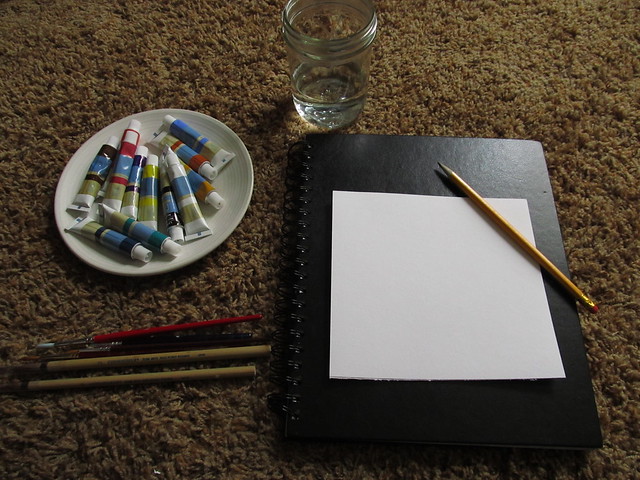
Draw out your design using pencil. Source image for mine is here.
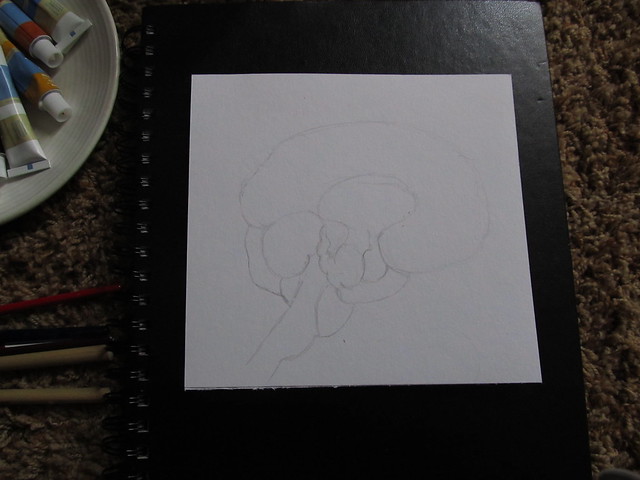
With your watercolor paint brush, start by getting the section of your drawing you want to paint first slightly wet. (Sorry about the dark photos, the lighting was bad!)

Mix your colors on a white plate so that you can accurately mix colors. I only used black and blue for mine.

The beauty of watercolor is that perfection is not important. As long as you stay in the lines while painting, you will do just fine. Even going outside the lines can be fun though sometimes...

Experiment with applying the paint to see what you prefer. I tried leaving my paper dry, adding clear water after applying paint to smooth and spread it out, and I did a couple layers to get darker colors.

You can even add some paint splatters by adding a lot of paint on your brush and then tapping the brush on your finger over top of your page. Be careful though, paint splatters don't land nicely on your paper and nowhere else!
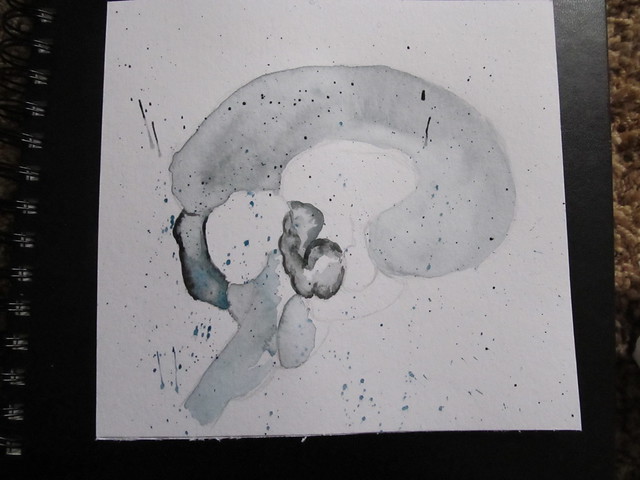
After you've let your paper dry all the way, feel free to erase the lines that you don't need anymore. The next step is to draw over the lines you've made. I also filled in some of the sections with texture before moving on to the brain.

Think about drawing the brain as if you were folding thick, soft noodles on top of one another. There shouldn't be any corners, sharp edges, or many straight lines because that would mean the noodles had broken. Use a pencil to lightly draw in some of the brain.
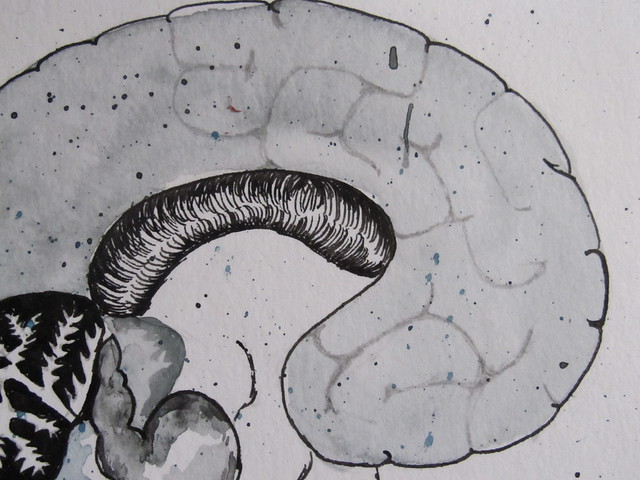
I did a little at a time to make sure I liked how it was turning out. After making sure I liked it, I drew over the lines with black ink.
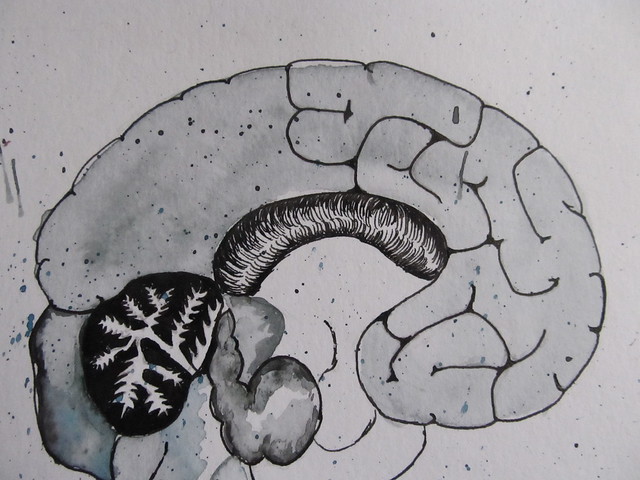
See what I mean about the sharp corners and lines? The left side of the drawing has sharp edges and the right side is a lot softer. Which side do you think looks more like a brain?
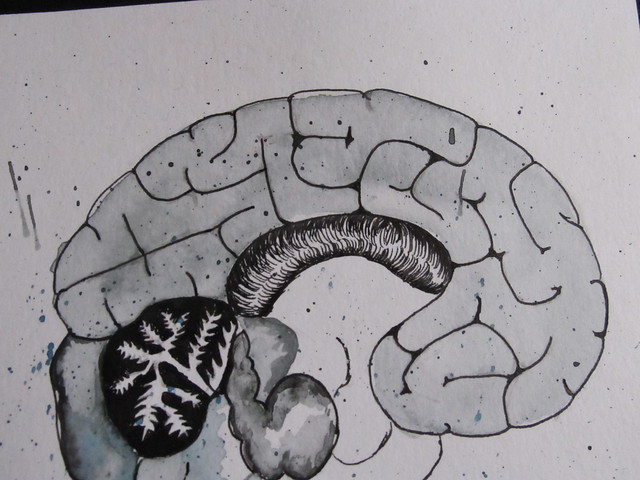
Just rounding out the corners makes a world of difference here. Doesn't that look better?
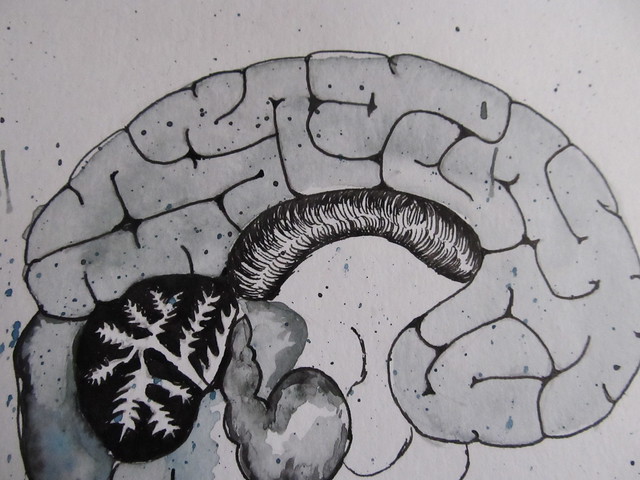
Now, to give my brain a little bit more dimension, I did a technique called stippling, which basically means an endless amount of tiny dots to build up a texture. I used the stippling technique to add a little bit of shadow.
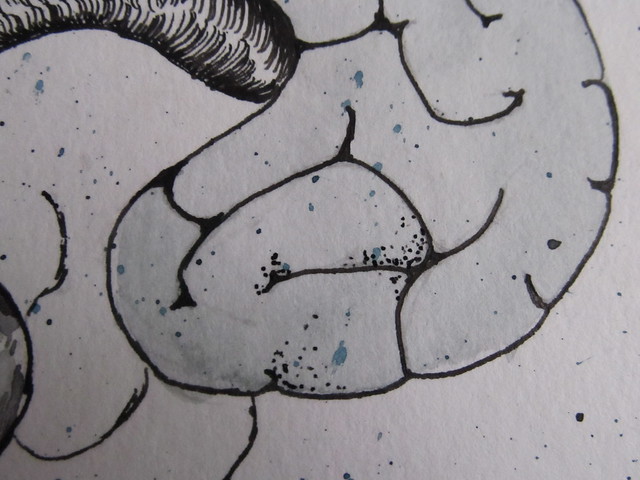
Now that the brain is all done, refer back to your source image (yours doesn't have to be a brain, but mine is). Add in the rest of the detail as best you can. Remember, don't be too hard on yourself since you are learning a new skill.
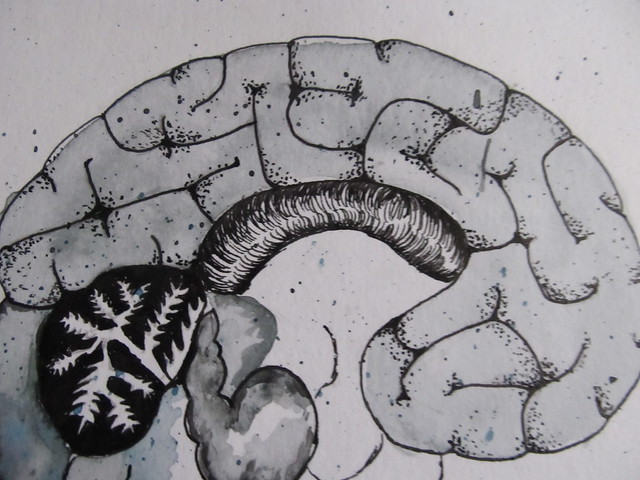
Here's a couple of detail shots.
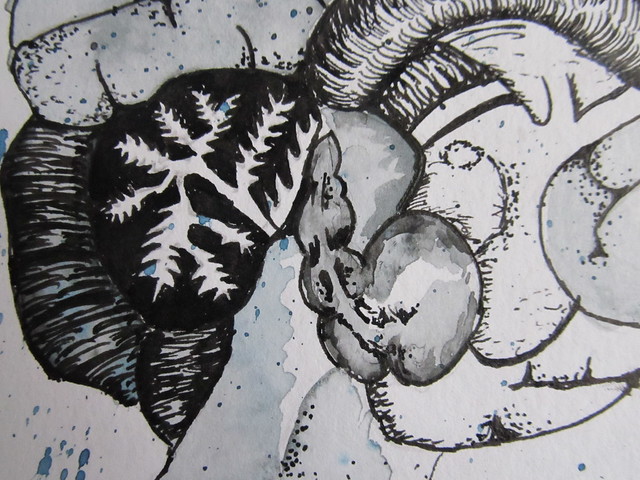
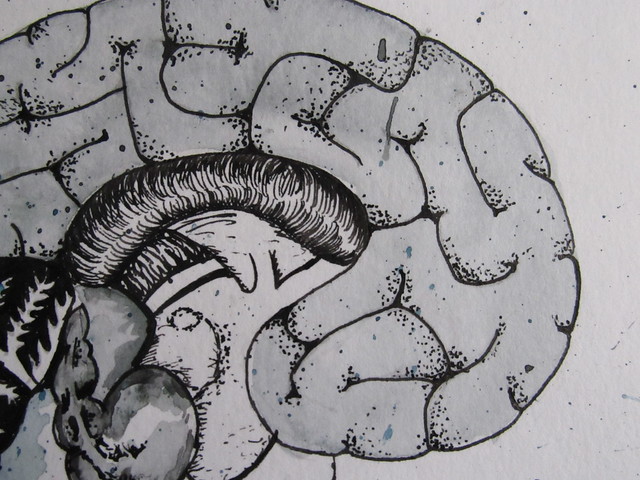
And my finished brain watercolor looks awesome (in my opinion!). Do you remember how I suggested you take up a new skill that you were already familiar with? Well, since I've taken lots of art classes for my education, I have a lot of experience with drawing and paint. So don't worry if you are not as satisfied with your first watercolor as I am with mine. The goal is to keep trying and not stress too much about it. Besides, if you're going to replace watching a little bit of television with a new hobby, it should be something you want to keep doing!
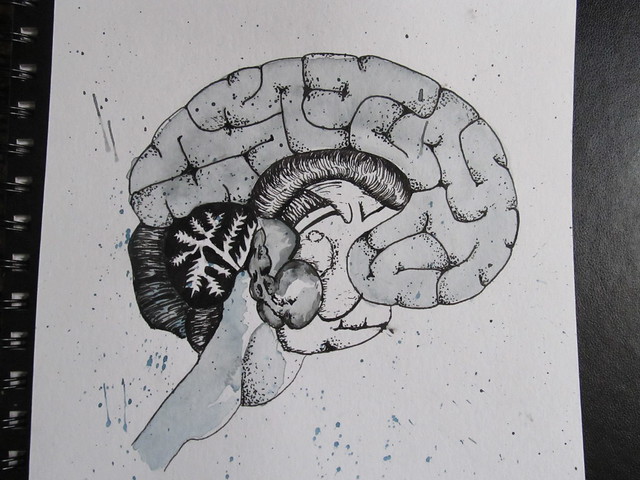
Have you learned any new skills lately? If you have any questions, feel free to email me!

THAT. IS. AMAZING. :)
ReplyDeleteThank you :) It's really not that hard, you just need to try it out for yourself
Delete